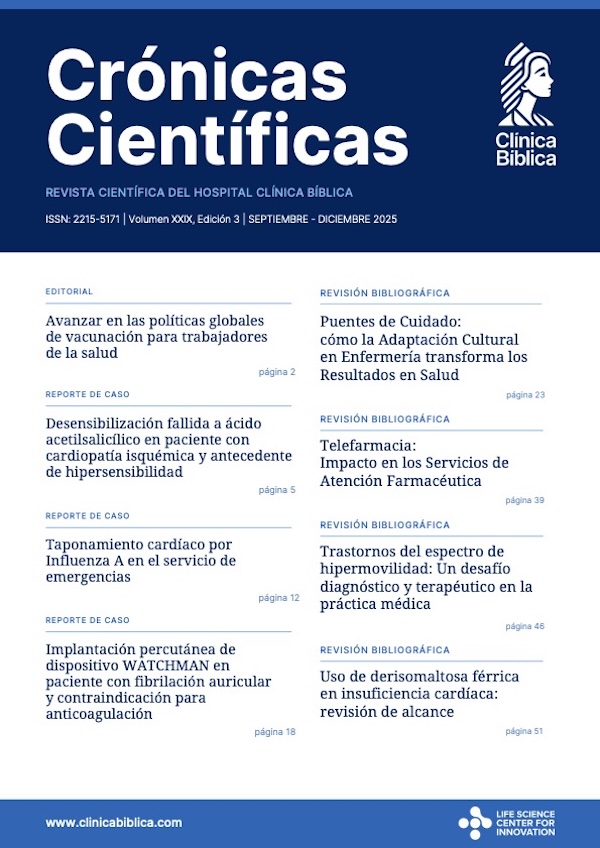- Visto: 1495
Revisión Bibliográfica
Diabetes Mellitus Tipo 2 y su influencia sobre el estrés oxidativo
Type 2 Diabetes Mellitus and its influence on oxidative stress
Edición XVI Setiembre - Diciembre 2020
DOI: https://doi.org/10.55139/LRHU1669
APA (7ª edición)
Álvarez Castillo, A., Rodríguez Alfaro, J. M., & Lizano Salas, M. (2020). Diabetes Mellitus Tipo 2 y su influencia sobre el estrés oxidativo. Crónicas científicas, 16(16), 40-51. https://doi.org/10.55139/LRHU1669.
Vancouver
Álvarez Castillo A, Rodríguez Alfaro JM, Lizano Salas M. Diabetes Mellitus Tipo 2 y su influencia sobre el estrés oxidativo. Cron cient. 11 de agosto de 2020; 16(16): 40-51.
Dr. Andrey Alvarez Castillo
Médico general.
Licenciatura en Medicina y Cirugía, Universidad Internacional de las Américas. San José, Costa Rica.
Máster en Fisiología, Universidad de Valencia, España.
Investigador independiente, San José, Costa Rica.
Dr. José Mario Rodríguez Alfaro
Médico general.
Licenciatura en Medicina y Cirugía, Universidad de Iberoamérica, San José, Costa Rica.
Investigador independiente. San José, Costa Rica.
Dr. Marco Lizano Salas
Médico general.
Licenciatura en Medicina y Cirugía, Universidad Latina de Costa Rica, San José, Costa Rica.
Médico general en Centro Neuroespinal, Hospital Cima, San José, Costa Rica.
Resumen
La diabetes mellitus tipo 2 es una de las enfermedades crónicas con mayor prevalencia a nivel mundial que afecta a gran parte de la población. Debido a los estados hiperglucémicos propios de la enfermedad se producen una serie de mecanismos y alteraciones a nivel celular que contribuyen con el desarrollo del estrés oxidativo, que en conjunto con la producción de distintas especies reactivas de oxígeno conllevan un mayor deterioro de la patología, así como el favorecimiento de la aparición de algunas complicaciones.
Palabras claves
Diabetes mellitus tipo 2, resistencia a la insulina, estrés oxidativo, oxidación, especies reactivas de oxígeno.
Abstract
Type 2 diabetes mellitus is one of the most prevalent chronic diseases worldwide affecting a large part of the population. Due to the hyperglycemic states of the disease, a series of mechanisms and alterations occur at the cellular level that contribute to the development of oxidative stress, which together with the production of different reactive oxygen species lead to further deterioration of the pathology, as well as, favoring the appearance of some complications.
Keywords
Diabetes Mellitus, Type 2, Insulin Resistance, Oxidative Stress, Oxidation, Reactive Oxygen Species.
Bibliografía
American Diabetes Association. (2018). 2. Classification and Diagnosis of Diabetes: Standards of Medical Care in Diabetes—2018. Diabetes Care, 41(Supplement 1), S13-S27. https://doi.org/10.2337/dc18-S002
Calderón Salinas, J. V., Muñoz Reyes, E. G. y Quintanar Escorza, M. A. (2013). Estrés oxidativo y diabetes mellitus. REB. Revista de educación bioquímica, 32(2), 53-66.
Calderón-Salinas, J. V., Muñoz-Reyes, E. G., Guerrero-Romero, J. F., Rodríguez-Morán, M., Bracho-Riquelme, R. L., Carrera-Gracia, M. A. y Quintanar-Escorza, M. A. (2011). Eryptosis and oxidative damage in type 2 diabetic mellitus patients with chronic kidney disease. Molecular and Cellular Biochemistry, 357(1-2), 171-179. https://doi.org/10.1007/s11010-011-0887-1
Céspedes Miranda, E. M., Riverón Forment, G., Alonso Rodríguez, C. y Cabrera Pérez-Sanz, E. (2014). Control glucémico y daño oxidativo a biomoléculas en diabéticos tipo 2. Revista Cubana de Endocrinología, 25(2), 46-56.
Cuerda, C., Luengo, L. M., Valero, M. A., Vidal, A., Burgos, R., Calvo, F. L. y Martínez, C. (2011). Antioxidantes y diabetes mellitus: Revisión de la evidencia. Nutrición Hospitalaria, 26(1), 68-78.
Evcimen, N. y King, G. (2007). The role of protein kinase C activation and the vascular complications of diabetes. Pharmacological research : the official journal of the Italian Pharmacological Society, 55, 498-510. https://doi.org/10.1016/j.phrs.2007.04.016
Goh, S.-Y. y Cooper, M. E. (2008). Clinical review: The role of advanced glycation end products in progression and complications of diabetes. The Journal of Clinical Endocrinology and Metabolism, 93(4), 1143-1152. https://doi.org/10.1210/jc.2007-1817
Golbidi, S., Alireza Ebadi, S. y Laher, I. (2011). Antioxidants in the Treatment of Diabetes. Current Diabetes Reviews, 7(2), 106-125. https://doi.org/10.2174/157339911794940729
Hashim, Z. y Zarina, S. (2012). Osmotic stress induced oxidative damage: Possible mechanism of cataract formation in diabetes. Journal of Diabetes and Its Complications, 26(4), 275-279. https://doi.org/10.1016/j.jdiacomp.2012.04.005
Heredia R., D., Fernández C., D., Alfonso R., J., Rodríguez V., E., Santana G., L. y Rodríguez P, M. (2014). 94 Sistema antioxidante enzimático e indicadores de daño oxidativo en pacientes diabéticos tipo 2. Recuperado de http://www.idf.org/diabetesatlas/5e/es/prologo?language=es
Kaneto, H., Katakami, N., Matsuhisa, M. y Matsuoka, T. (2010). Role of Reactive Oxygen Species in the Progression of Type 2 Diabetes and Atherosclerosis. Mediators of Inflammation, 2010, 1-11. https://doi.org/10.1155/2010/453892
Likidlilid, A., Patchanans, N., Peerapatdit, T. y Sriratanasathavorn, C. (2010). Lipid peroxidation and antioxidant enzyme activities in erythrocytes of type 2 diabetic patients. Journal of the Medical Association of Thailand = Chotmaihet Thangphaet, 93(6), 682-693.
Ma, J., Nakagawa, Y., Kojima, I. y Shibata, H. (2014). Prolonged insulin stimulation down-regulates GLUT4 through oxidative stress-mediated retromer inhibition by a protein kinase CK2-dependent mechanism in 3T3-L1 adipocytes. The Journal of Biological Chemistry, 289(1), 133-142. https://doi.org/10.1074/jbc.M113.533240
Nwaneri, C. (2015). Diabetes mellitus: A complete ancient and modern historical perspective. WebmedCentral Diabetes, WMC004831. https://doi.org/10.9754/journal.wmc.2015.004831
Pathak, A. K., Sinha, P. K. y Sharma, J. (2013). Diabetes – A Historical review. Journal of Drug Delivery and Therapeutics, 3(1). https://doi.org/10.22270/jddt.v3i1.389
Singh, D. K., Winocour, P. y Farrington, K. (2011). Oxidative stress in early diabetic nephropathy: Fueling the fire. Nature Reviews. Endocrinology, 7(3), 176-184. https://doi.org/10.1038/nrendo.2010.212
Storino, M. A., Contreras, M. A., Rojano, J., Serrano, R. y Nouel, A. (2014). Complicaciones de la diabetes y su asociación con el estrés oxidativo: Un viaje hacia el daño endotelial. Revista Colombiana de Cardiología, 21(6), 392-398. https://doi.org/10.1016/j.rccar.2014.09.004
Takayanagi, R., Inoguchi, T. y Ohnaka, K. (2010). Clinical and experimental evidence for oxidative stress as an exacerbating factor of diabetes mellitus. Journal of Clinical Biochemistry and Nutrition, 48(1), 72-77. https://doi.org/10.3164/jcbn.11-014FR
Walton, E. L. (2017). Oxidative stress and diabetes: Glucose response in the cROSsfire. Biomedical Journal, 40(5), 241-244. https://doi.org/10.1016/j.bj.2017.10.001
APA (7ª edición)
Álvarez Castillo, A., Rodríguez Alfaro, J. M., & Lizano Salas, M. (2020). Diabetes Mellitus Tipo 2 y su influencia sobre el estrés oxidativo. Crónicas científicas, 16(16), 40-51. https://doi.org/10.55139/LRHU1669.
Vancouver
Álvarez Castillo A, Rodríguez Alfaro JM, Lizano Salas M. Diabetes Mellitus Tipo 2 y su influencia sobre el estrés oxidativo. Cron cient. 11 de agosto de 2020; 16(16): 40-51.
Esta obra está bajo una licencia internacional Creative Commons: Atribución-NoComercial-CompartirIgual 4.0 Internacional (CC BY-NC-SA 4.0)

Realizar búsqueda
Última Edición
Ediciones Anteriores






